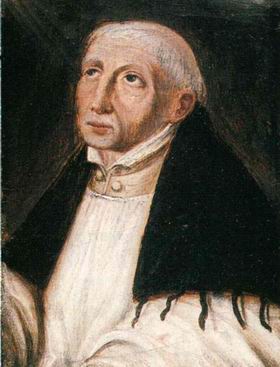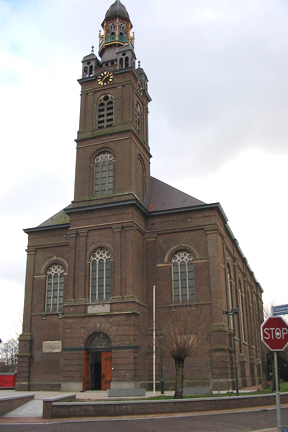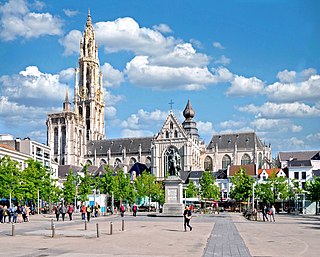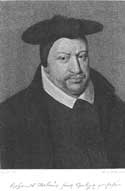Related Research Articles

The Poor Clares, officially the Order of Saint Clare, originally referred to as the Order of Poor Ladies, and also known as the Clarisses or Clarissines, the Minoresses, the Franciscan Clarist Order, and the Second Order of Saint Francis, are members of an enclosed order of nuns in the Roman Catholic Church. The Poor Clares were the second Franciscan branch of the order to be established. Founded by Clare of Assisi and Francis of Assisi on Palm Sunday in the year 1212, they were organized after the Order of Friars Minor, and before the Third Order. As of 2011, there were over 20,000 Poor Clare nuns in over 75 countries throughout the world. They follow several different observances and are organized into federations.

John van Ruysbroeck, original Middle Dutch name Jan van Ruusbroec, was an Augustinian canon and one of the most important of the medieval mystics of the Low Countries. Some of his main literary works include The Kingdom of the Divine Lovers, The Twelve Beguines, The Spiritual Espousals, A Mirror of Eternal Blessedness, The Little Book of Enlightenment, and The Sparkling Stone. Some of his letters also survive, as well as several short sayings. He wrote in the Dutch vernacular, the language of the common people of the Low Countries, rather than in Latin, the language of the Catholic Church liturgy and official texts, in order to reach a wider audience.
Devotio Moderna was a movement for religious reform, calling for apostolic renewal through the rediscovery of genuine pious practices such as humility, obedience, simplicity of life, and integration into the community. It began in the late 14th century, largely through the work of Gerard Groote, and flourished in the Low Countries and Germany in the 15th century, but came to an end with the Protestant Reformation. It is most known today through its influence on Thomas à Kempis, the author of The Imitation of Christ, a book which has proved highly influential for centuries.
Nicholas Tacitus Zegers was a Flemish Franciscan biblical exegete.
Cornelius van Zierikzee was a Dutch priest known for his work in Scotland.

Erp is a village in the southern Netherlands, in the province of North Brabant between 's-Hertogenbosch and Eindhoven. Prior to 1994, Erp was a municipality consisting of the town of Erp and the villages of Boerdonk and Keldonk. In that year, the municipality was merged with the municipality of Veghel to form one municipality under the latter name. The area of the former municipality of Erp has a population of 6,663, while Veghel has a population of 37,655.

Peter Blomevenna Dutch: Pieter Blommeveen; 29 March 1466 in Leiden – 14 August 1536 in Cologne) was a Carthusian author and prior of Cologne Charterhouse from 1507 to 1536.
Henricus Canisius was a Dutch canonist and historian.
Nicolaus Ferber was a German Franciscan and controversialist.

Aodh Mac Cathmhaoil, O.F.M., was an Irish Franciscan theologian and Archbishop of Armagh. He was known by Irish speakers at Leuven (Louvain) by the honorary name Aodh Mac Aingil, and it was under this title that he published the Irish work Scáthán Shacramuinte na hAthridhe.

Dietrich Coelde was a German Franciscan missionary.

The Diocese of Antwerp is a Latin Church ecclesiastical territory or diocese of the Catholic Church in Belgium. The diocese was restored in 1961. It is a suffragan in the ecclesiastical province of the metropolitan Archdiocese of Mechelen-Brussels. Its cathedra is found within the Cathedral of Our Lady.

Joannes Molanus (1533–1585), often cited simply as Molanus, is the Latinized name of Jan Vermeulen or Van der Meulen, an influential Counter Reformation Catholic theologian of Louvain University, where he was Professor of Theology, and Rector from 1578. Born at Lille, he was a priest and canon of St. Peter's Church, Leuven, where he died.
Fortunatus Hueber was a West German Franciscan historian and theologian.
Michael Weiße or Weisse was a German theologian, Protestant reformer and hymn writer. First a Franciscan, he joined the Bohemian Brethren. He published the most extensive early Protestant hymnal in 1531, supplying most hymn texts and some tunes himself. One of his hymns was used in Johann Sebastian Bach's St John Passion.

Maria, Königin des Friedens is a pilgrimage church and parish in Neviges, part of Velbert, North Rhine-Westphalia, Germany. The pilgrimage dates back to 1676. Neviges was the home of a Franciscan monastery from 1675 until the end of 2019. A church dedicated to the Immaculate Conception in 1728 became too small for the growing numbers of pilgrims in the 20th century.

Helmut Alfons Schlegel is a German Franciscan Catholic priest, meditation instructor, author, librettist and songwriter. He is known for writing new spiritual songs, set to music by various composers.
Hendrik van Cuyk or Henricus Cuyckius (1546–1609) was the second bishop of Roermond from 1596 until his death in 1609.
Cornelius Thielmans was a Franciscan hagiographer from the Habsburg Netherlands.
Henricus Sedulius (1547-1621) – the Latinized name of Henri de Vroom van Kleef – was a Belgian Franciscan scholar noted for his works on religious figures such as the lives of St. Elziarius and St. Francis of Assisi. He also published works that defended the Franciscan order.
References
- Anna Dlabačová, Literatuur en observantie: De Spieghel der volcomenheit van Hendrik Herp en de dynamiek van laatmiddeleeuwse tekstverspreiding, Uitgeverij Verloren, 2014, ISBN 9789087044183
- Bernard McGinn, The Varieties of Vernacular Mysticism, (New York: Herder & Herder, 2012).